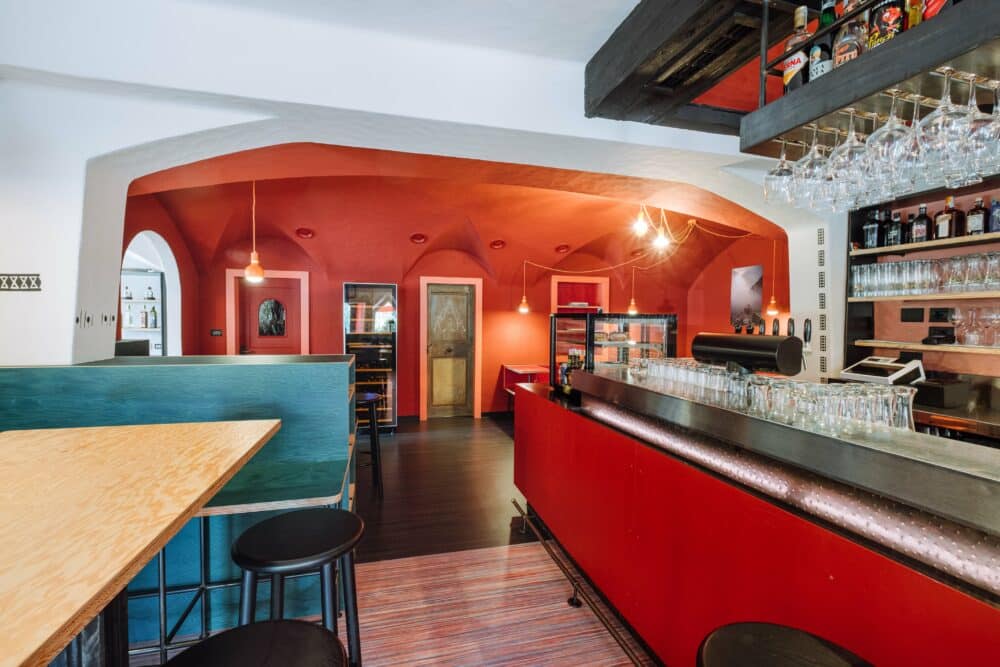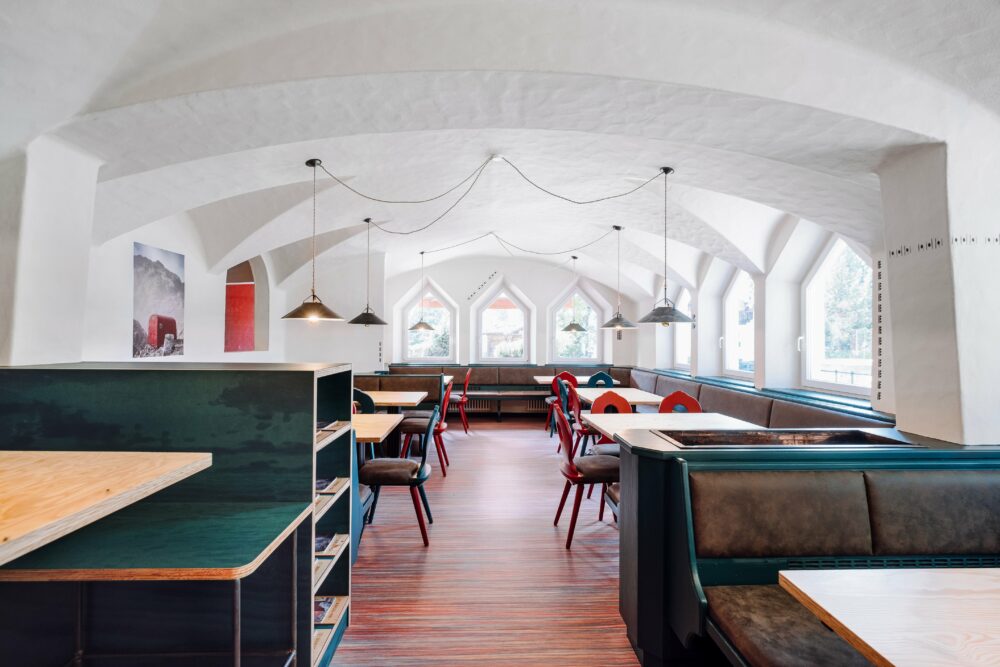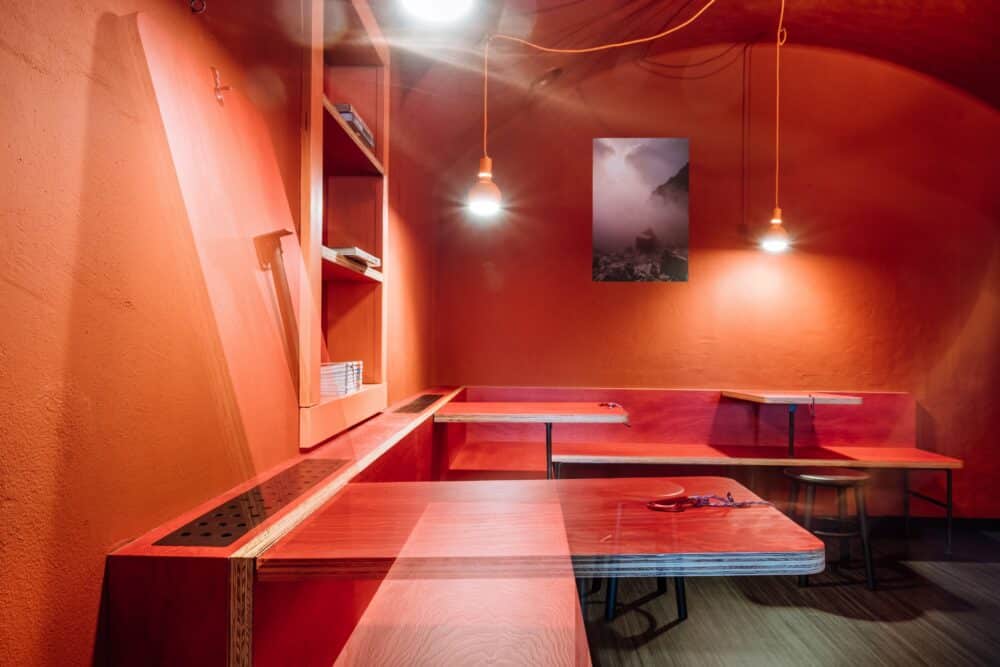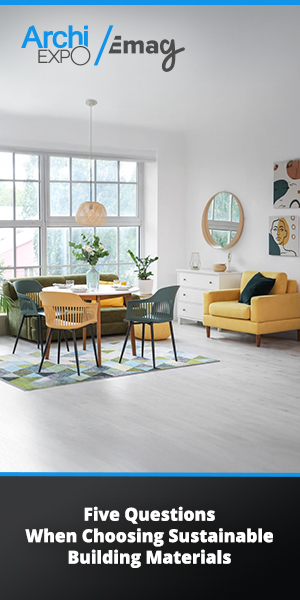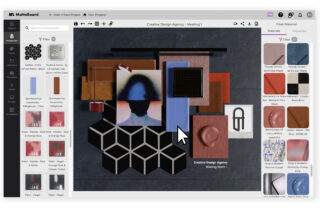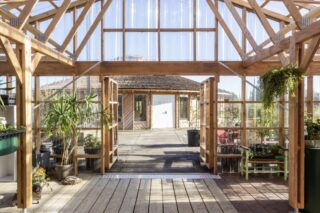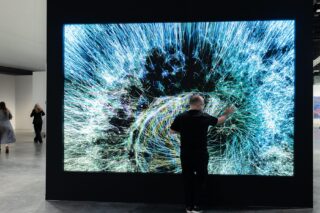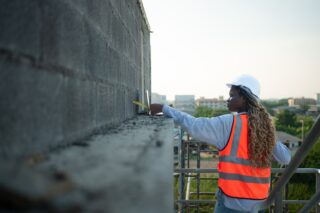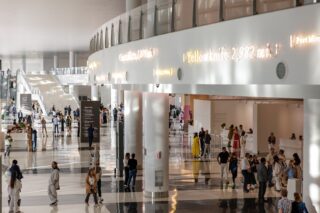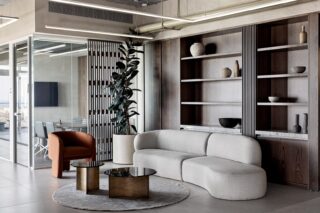With its rich history of architectural styles, modern Italian architecture draws on this heritage to create international aesthetics, as demonstrated by the work of our four featured firms
Italy’s rich architectural heritage reflects its historical division into various small states until the unification in 1871. This regional fragmentation fostered diverse architectural traditions, with early influences from the Etruscans in Northern and Central Italy, and the Greeks in the South. The ascendancy of the Roman Empire further propelled architectural innovation, marked by ingenious solutions such as vaults and arches, evident in enduring marvels like the Colosseum and aqueducts. Subsequent epochs witnessed a succession of architectural styles, from early Christian to Baroque, with Italy’s Neoclassical movement gaining global prominence from the late 17th to early 20th centuries. Throughout these transitions, visionary architects like Gio Ponti (1891-1979), Aldo Rossi (1931-1997), and Renzo Piano (1937) continued Italy’s legacy of architectural excellence, leaving an indelible mark on the global architectural landscape.
Elements of Piano in Projects by Mask Architects
Piano, the most well-known of them today, does not have a clear signature style but prioritizes fine engineering, technology, and a focus on structural elements in his wide-ranging portfolio of projects. All these three attributes are present at Mask Architects’ impressive luxury Villa G01, soon to be completed in Northern Sardinia. Undulating within a 4,000 sqm lush garden, the building was modeled around an interior meandering wall, which the design team describes as the “main magnetic curve”. The villa emulates the architectural style of the Sardinian works of French architect Jacques Couëlle. Its interiors and carved-out spaces are inspired by the Domus de Janas – the stone chamber tombs found in the Nuragic settlements of ancient Sardinia, which date from as early as 18th century BC – long before the Romans arrived at the island, 15 centuries later. The shapely pool has five different water depths and foldable curtain walls that create a transition between the interior and exterior and an infinity pool. Off-site robots built four-by-four-meter blocks of high-density polyurethane with a special steel structure which were transported inside.
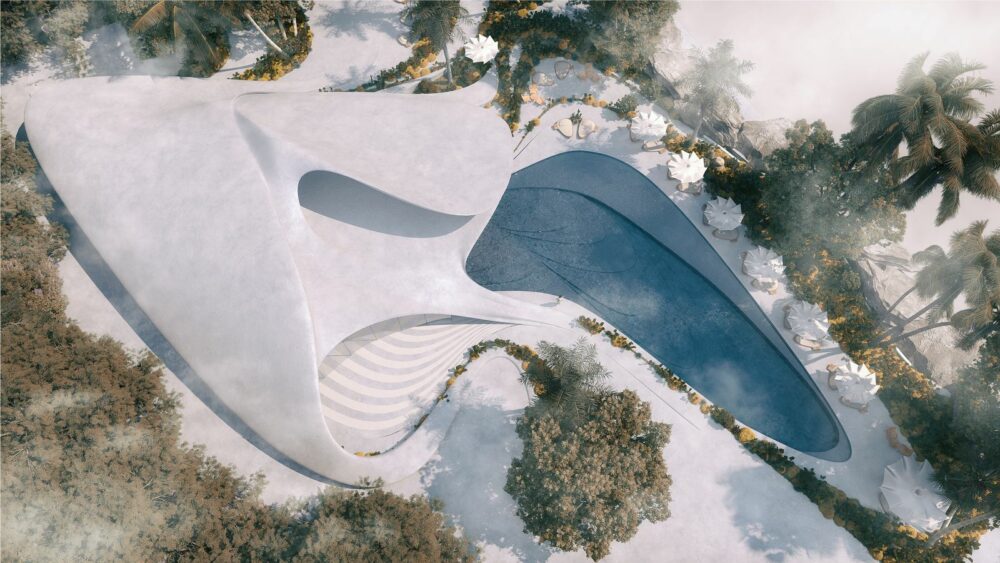
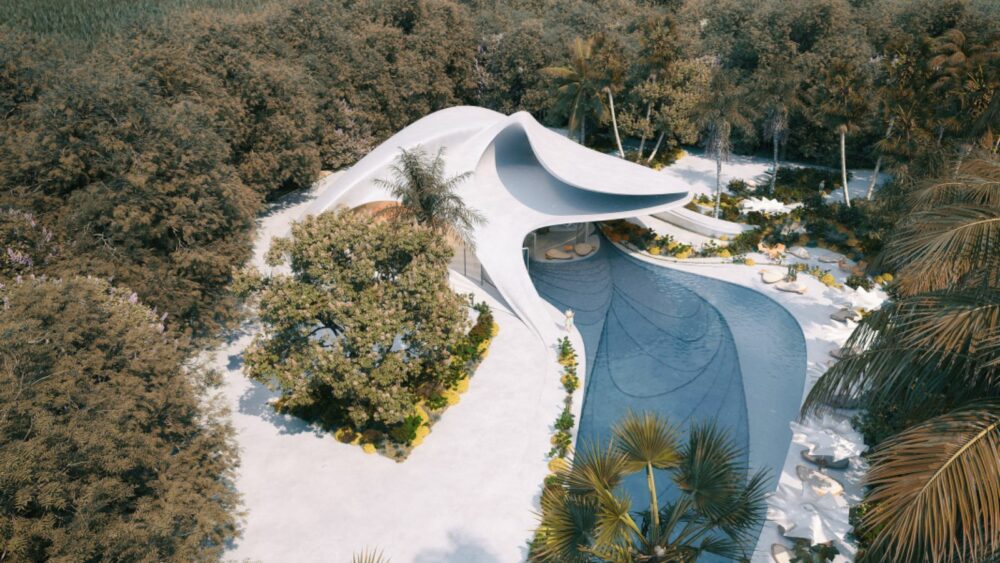
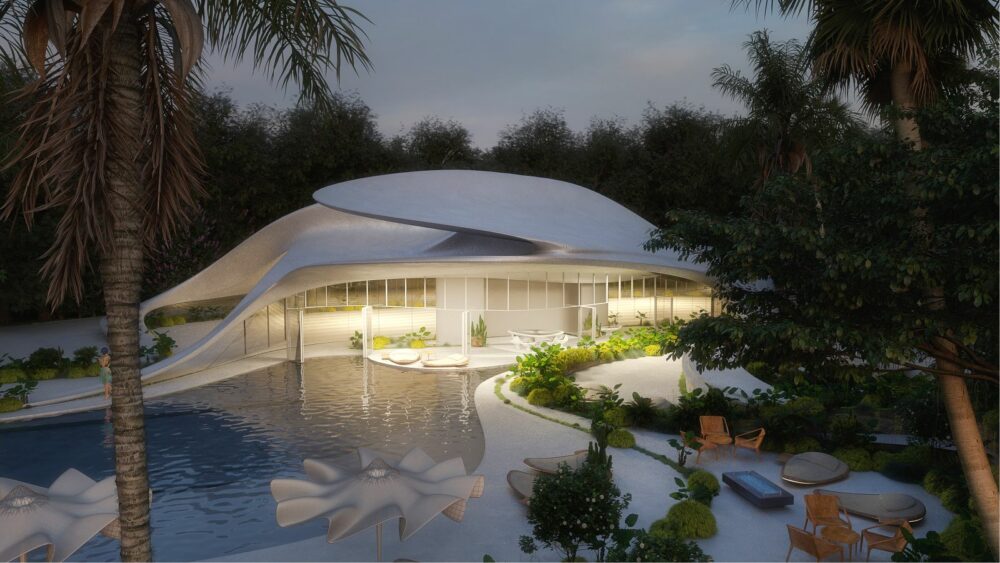
The Tuscan Style with Didonè Comacchio Architects
Although contemporary Italian architecture is increasingly multi-faceted and shaped by global trends and forces, the influence from its past remains strong – and not only when it comes to the more obvious, glorious past. The Tuscan style, for example, originates from the typical, medieval constructions of the region, when most buildings were horizontal, had walls made of irregular stones, and only one or two floors. Thick walls of rustic stone or terracotta with wooden doors and windows still exist in Tuscany today – and are a symbol of a sedate life in a rustic yet comfortable environment. A particularly modern interpretation of this style can be found in two projects by Didonè Comacchio Architects: House MD and House NF, both located at Bassano del Grappa, in the province of Vincenza. Completed in 2023, the MD House is partially embedded in the ground to make the most of the views of the natural landscape and take advantage of the different levels of the garden. The House NF, on the other hand, was completed in 2022. While it is made of exposed concrete rather than stones, its wooden frameworks and one of its two courtyards extending towards the garden create a peaceful, rural atmosphere.

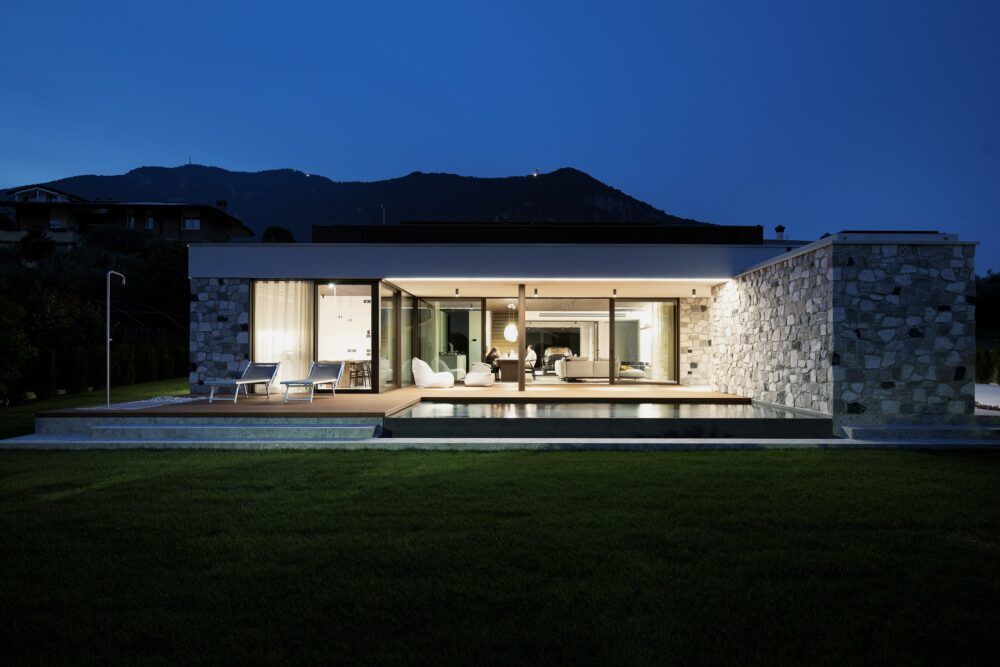
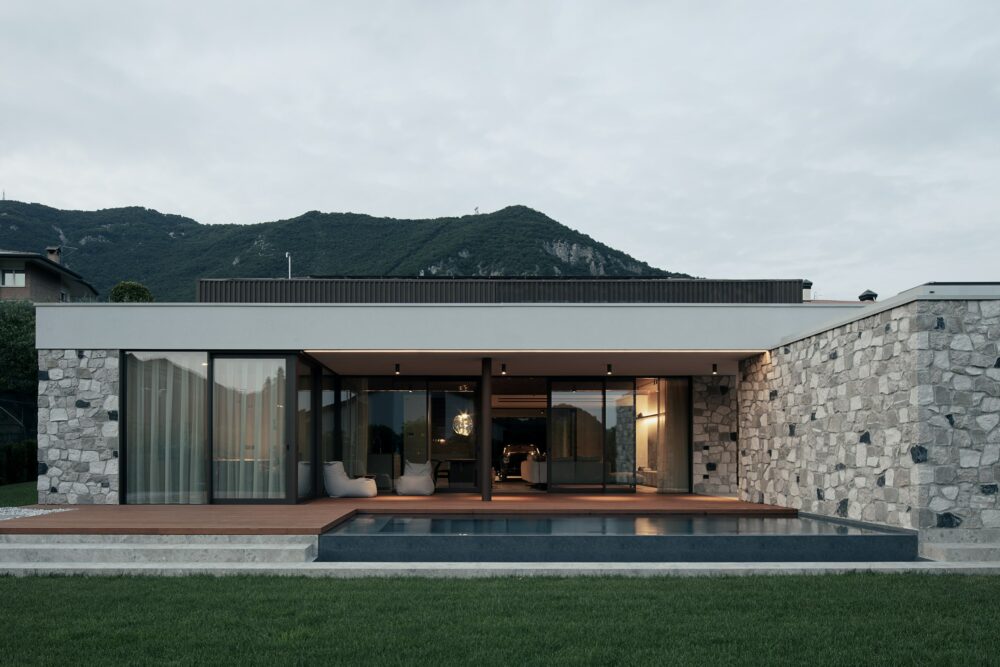
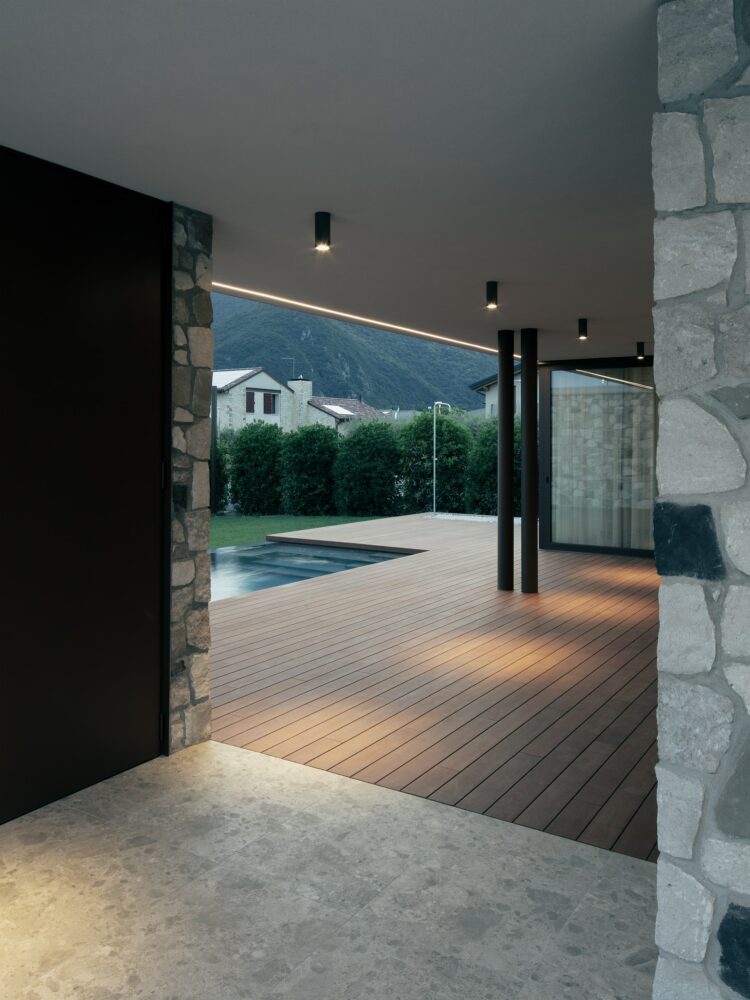
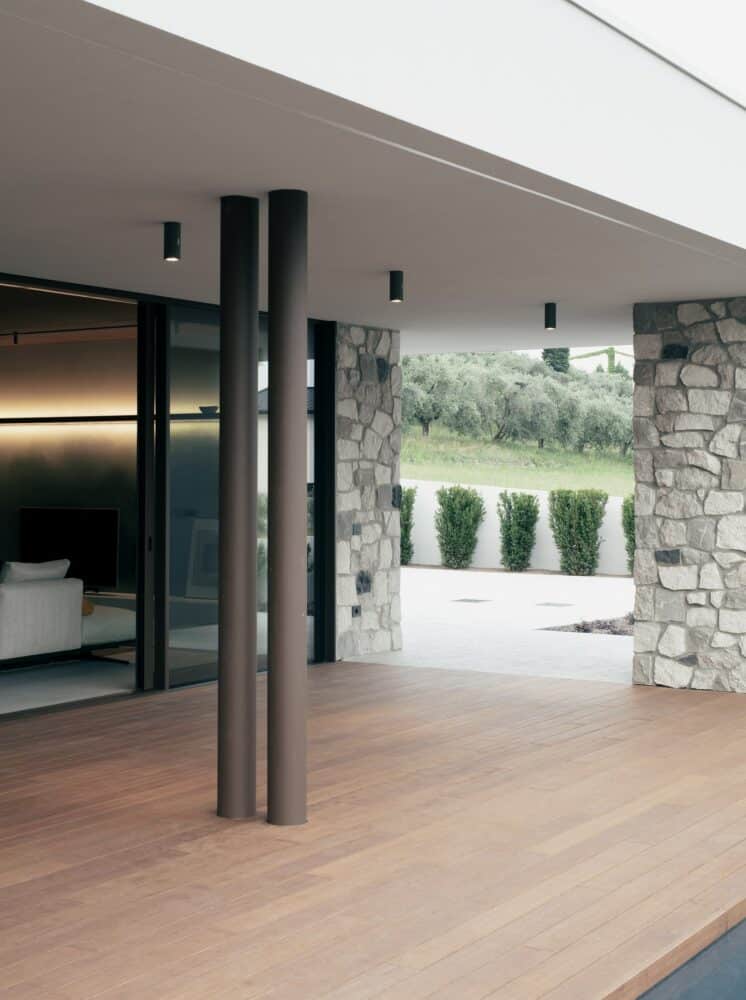

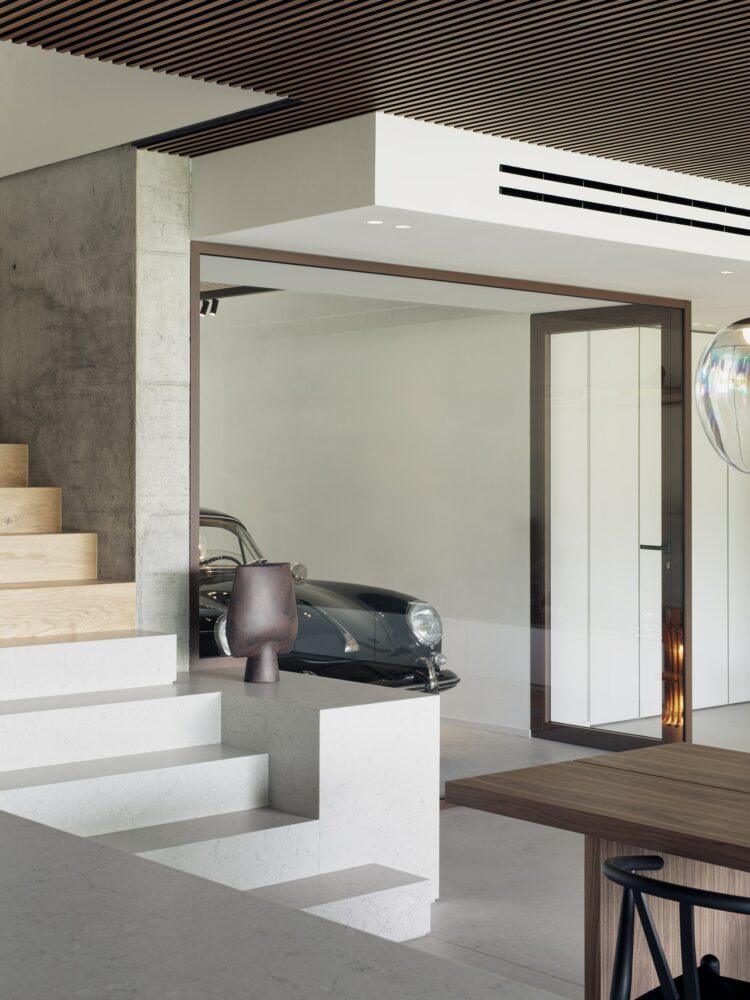
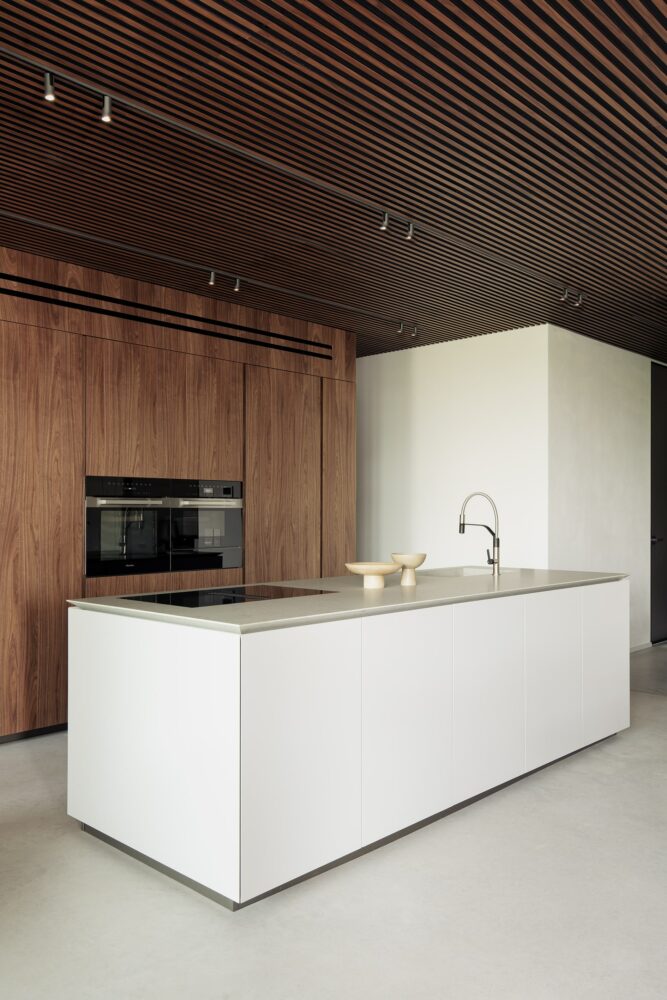
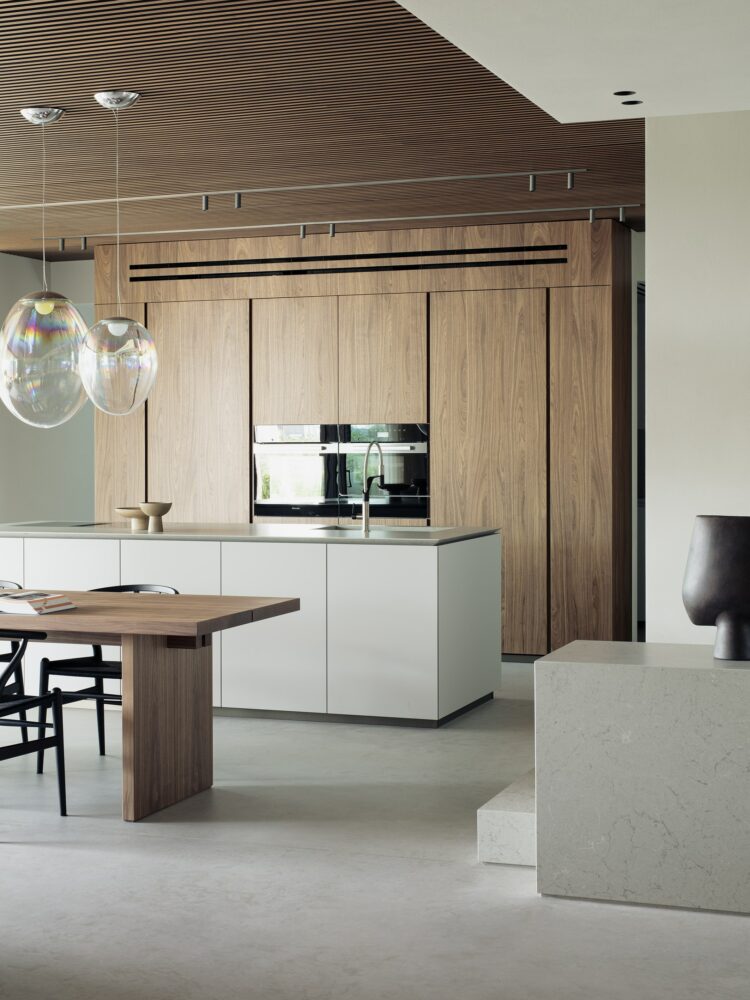
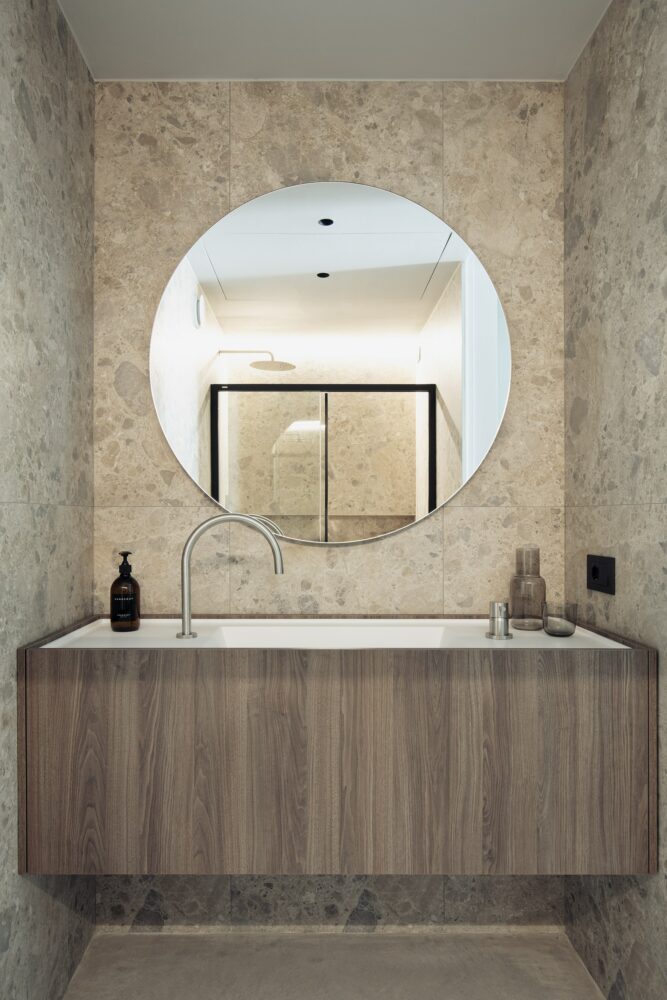
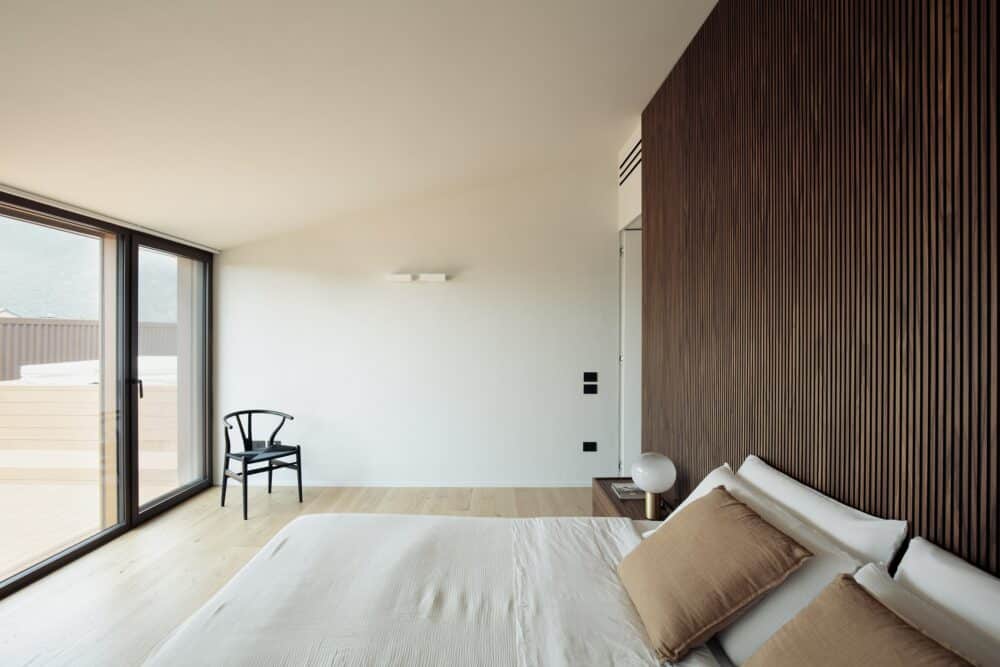
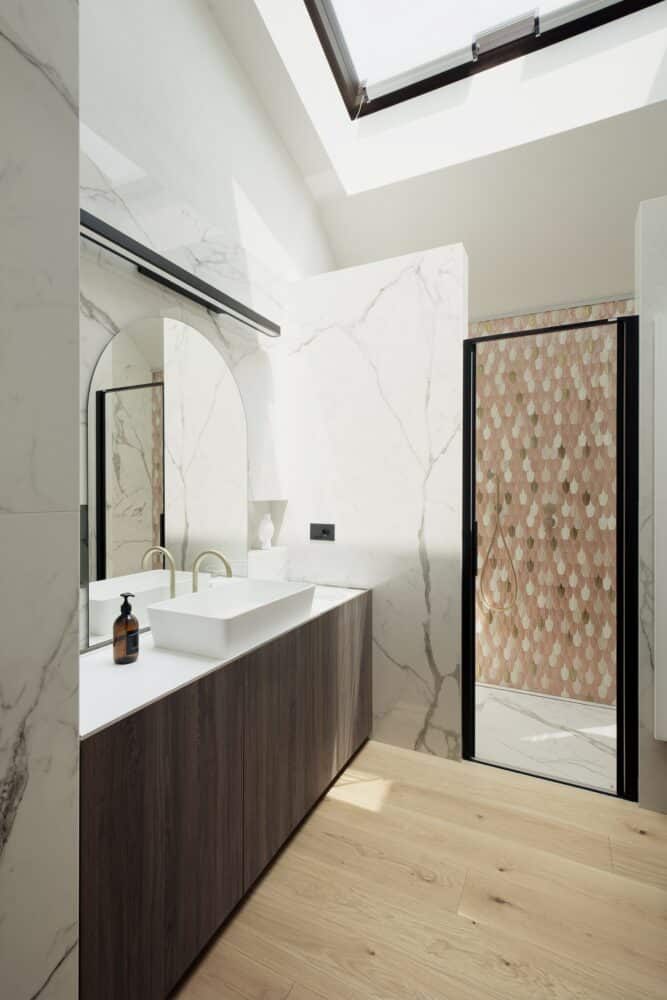
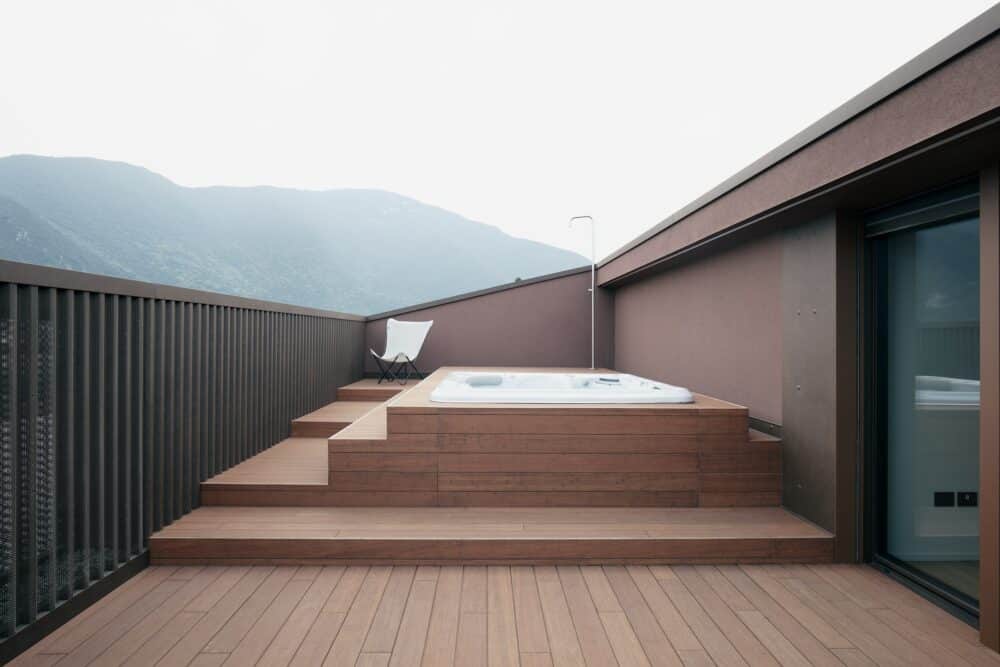
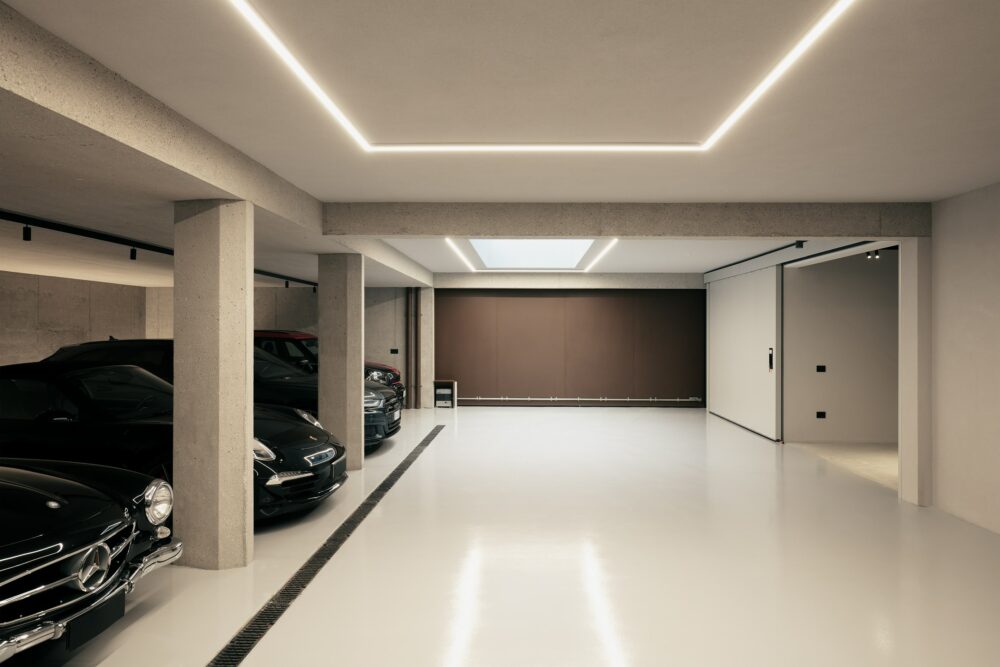
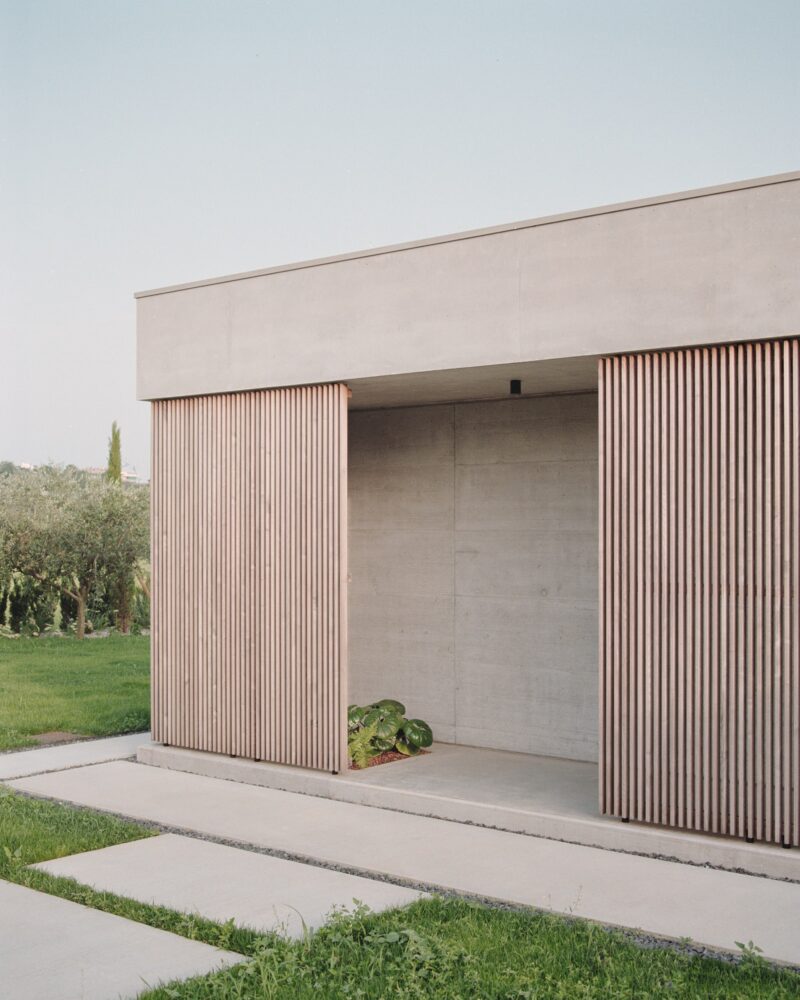
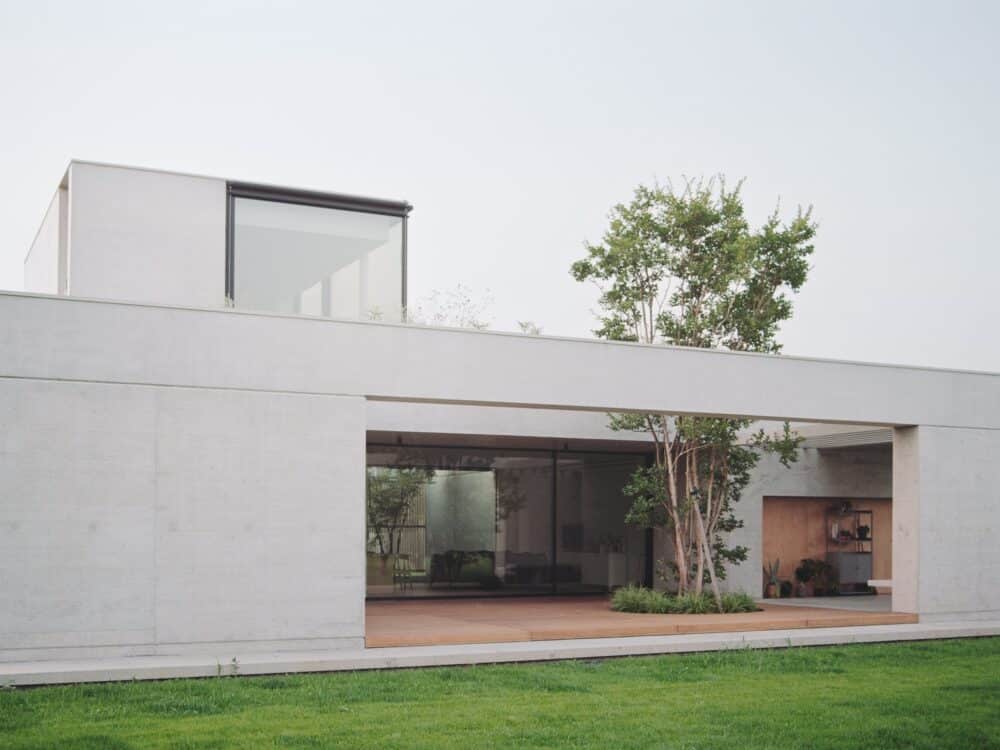
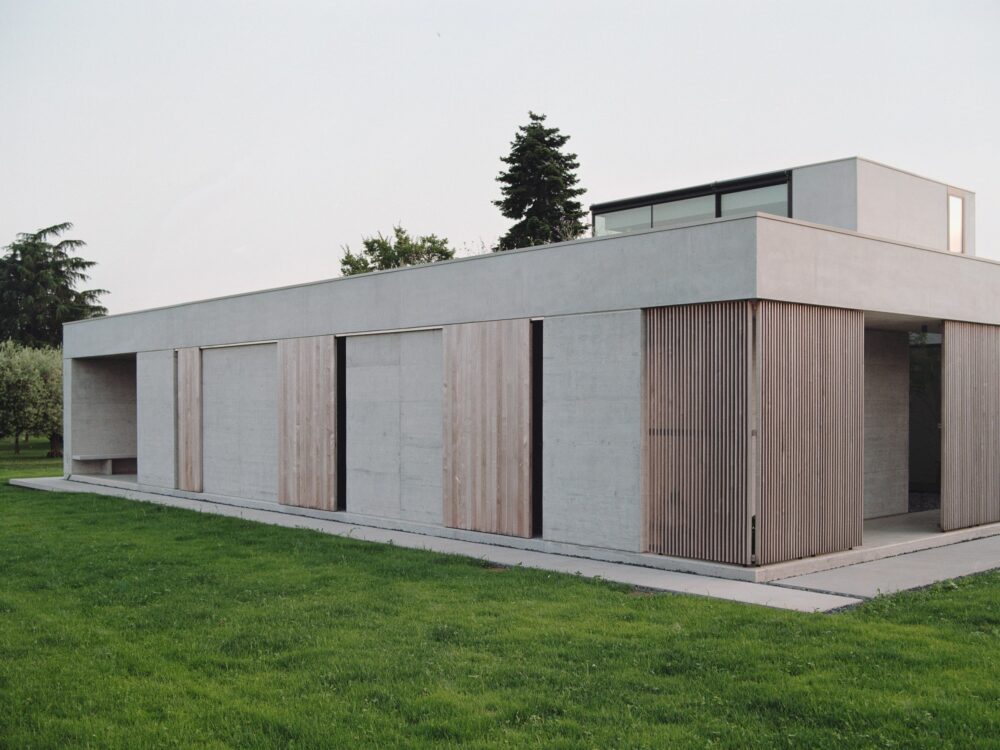
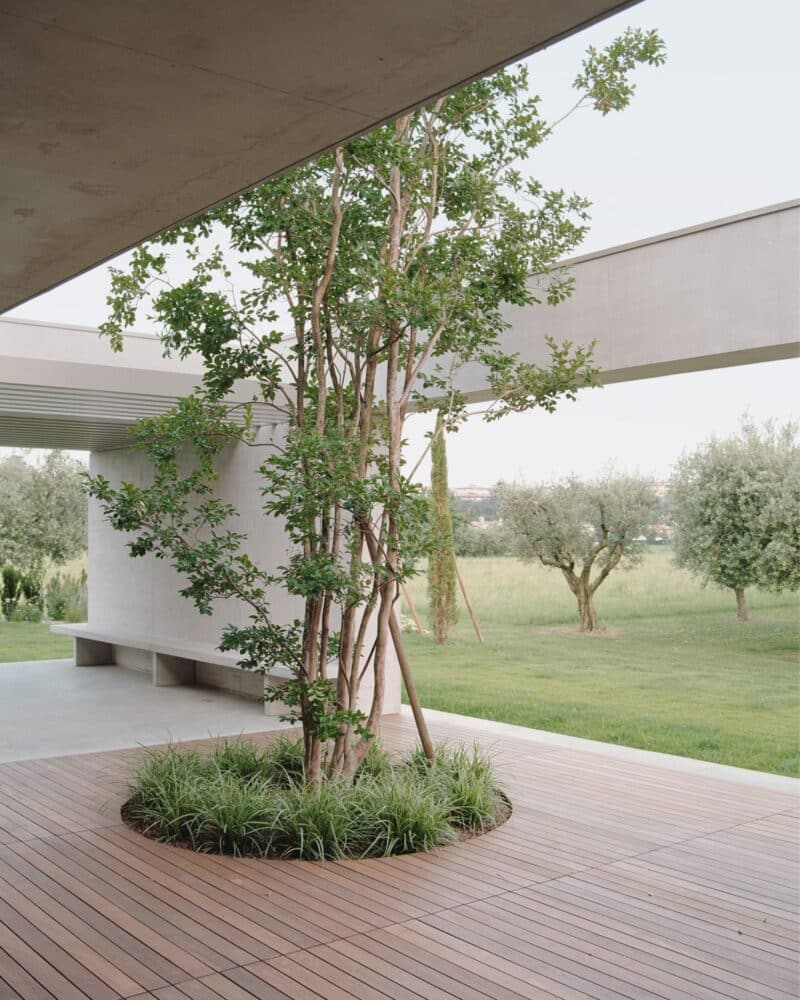
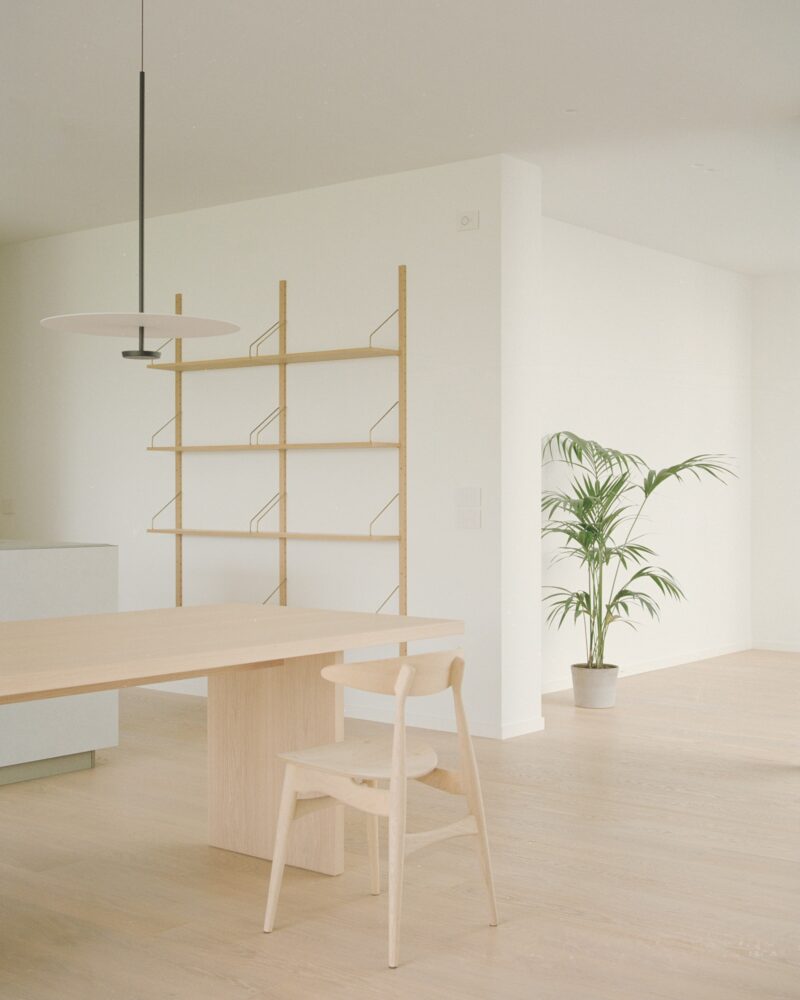
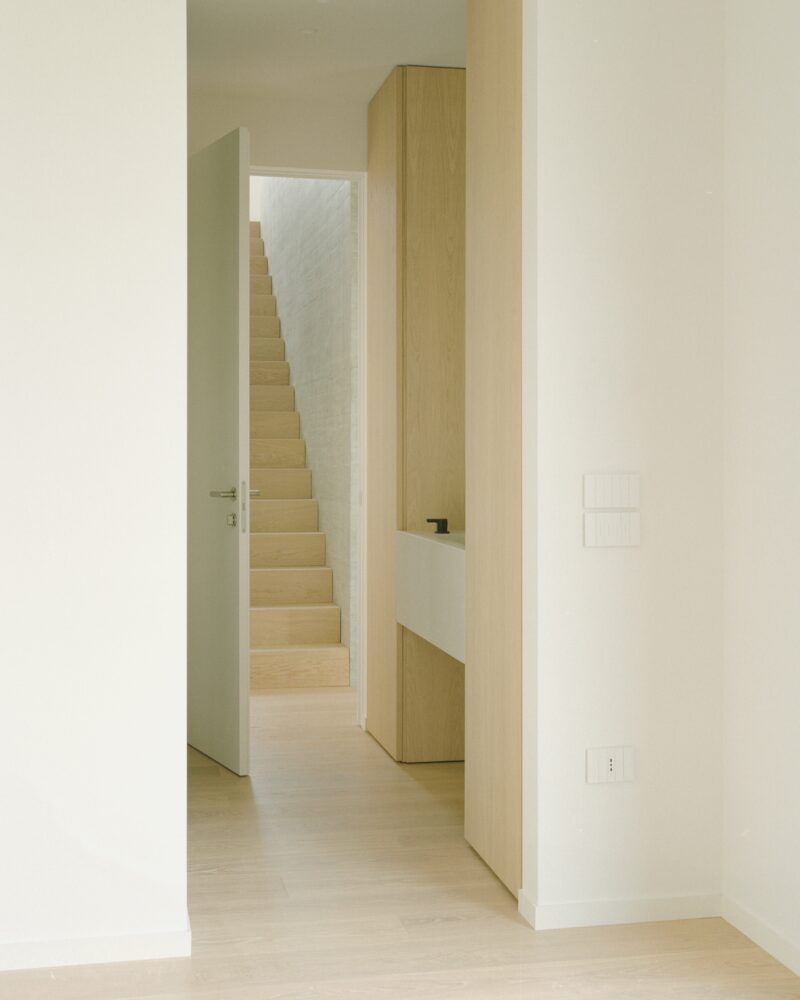
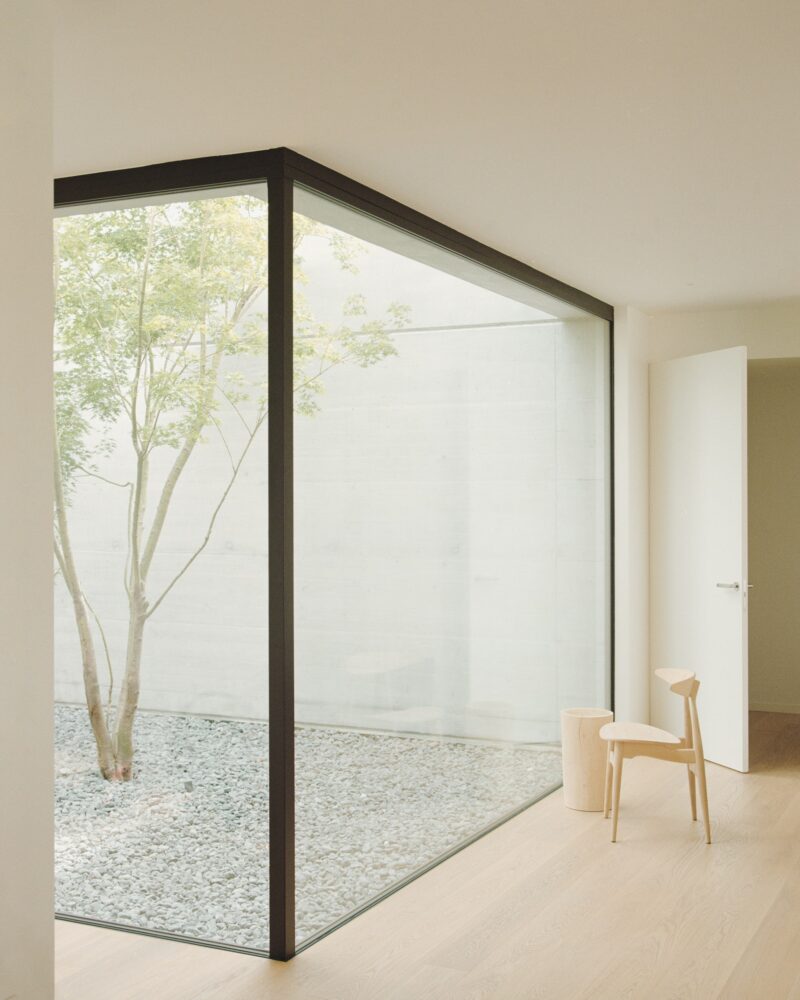
Mimetic Design: Integration with Nature in Projects by NOA
Clever integration with nature is a main feature also in two NOA’s renovation projects. The extension of the Olympic Spa Hotel in Val di Fassa, in the Dolomites region, was completed by the firm in 2023. Their main goal was to integrate the facilities with the surroundings, shifting the center of gravity of the hotel from the provincial road, which most of the rooms hitherto overlooked, to the slope behind it. The new sauna, especially, is an example of “mimetic” design – in NOA’s team words – as well as sustainable intervention.
Originally a farmhouse, the Puradies resort, located in Leogang (an Austrian town close to the North of Italy), is now a village of 76 rooms and 14 chalets. Completed in 2023, the renovation focused on the striking mountainous landscape from the very beginning. Now with a new spa and restaurant, Puradies’ floor plans are laid out as concentric rows, blending in with the natural topography. One center faces the bathing lake and the other faces the hill on the South side. The new wellness wing, with its different spaces, rises out of the ground like a gentle wave and disappears again into the meadow with its expressive peaked canopies.
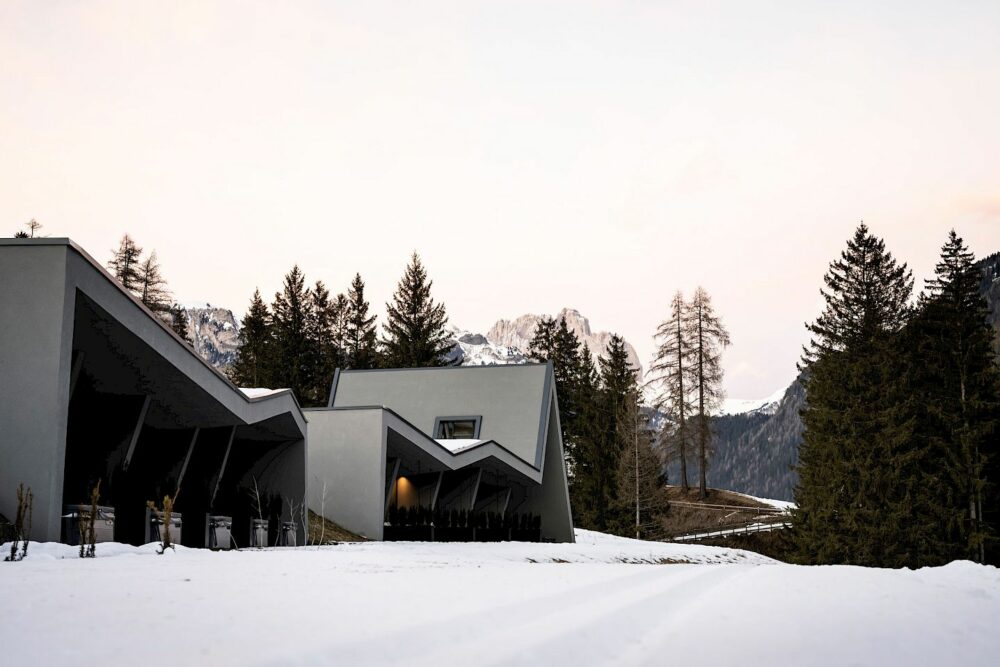
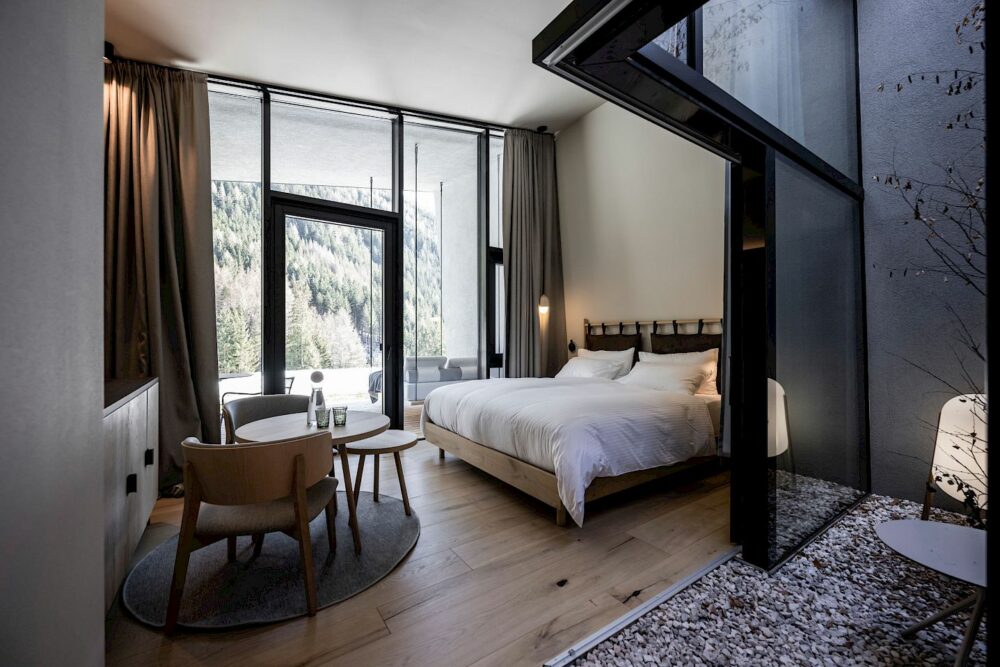
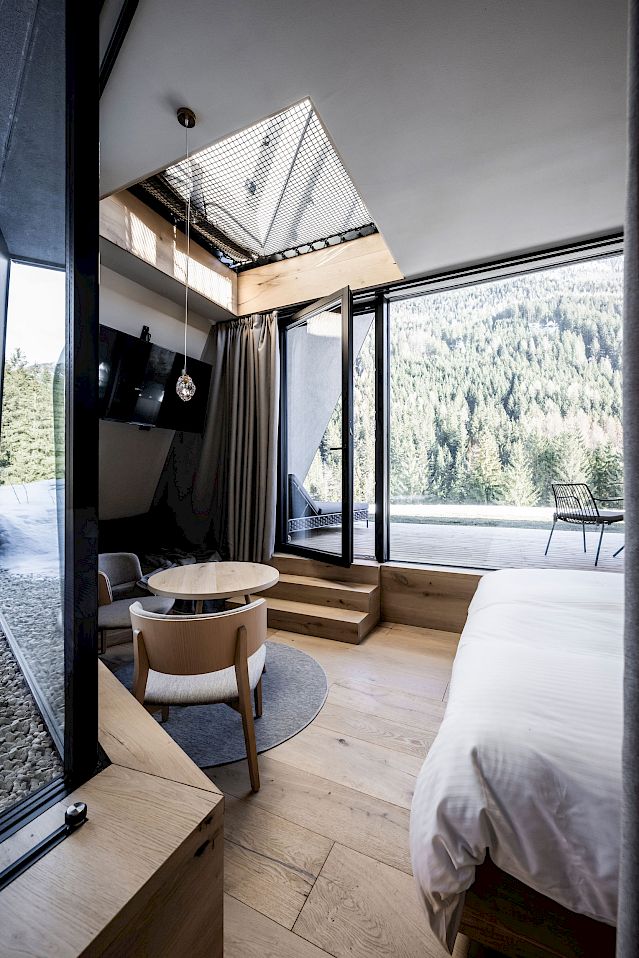
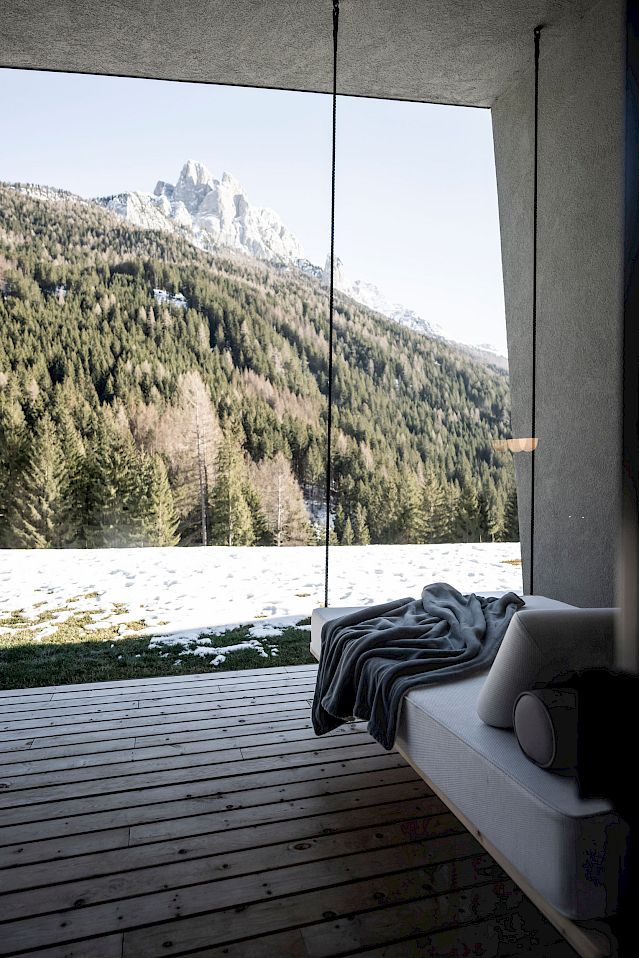
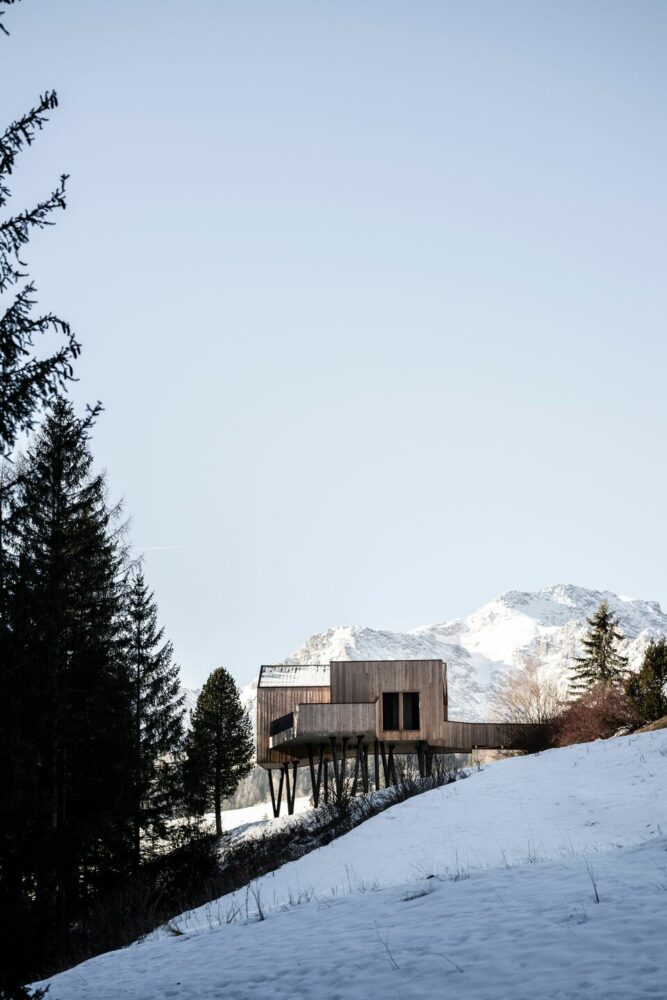
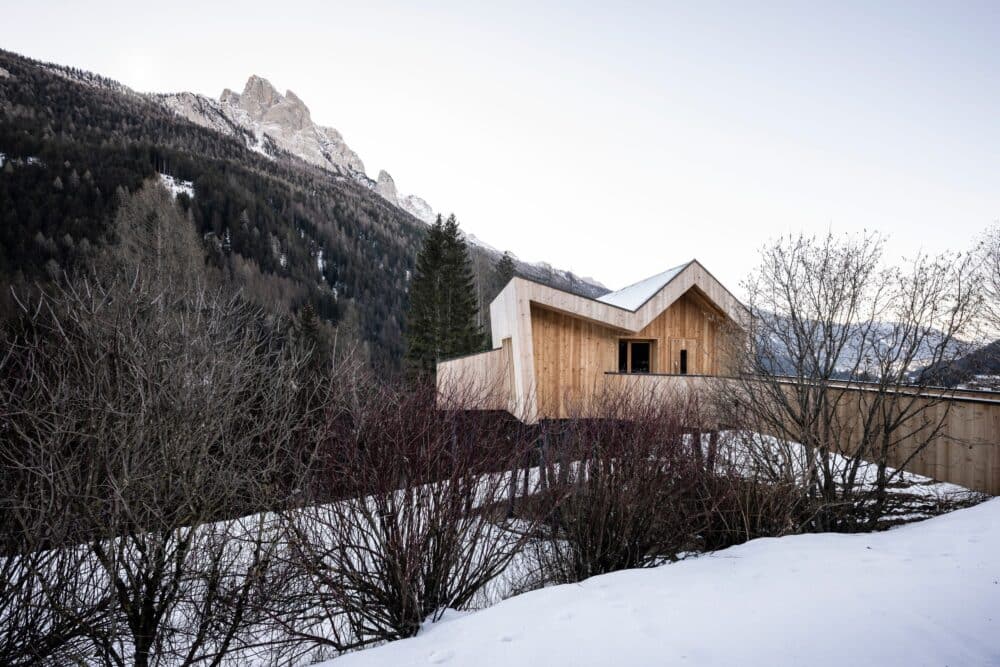
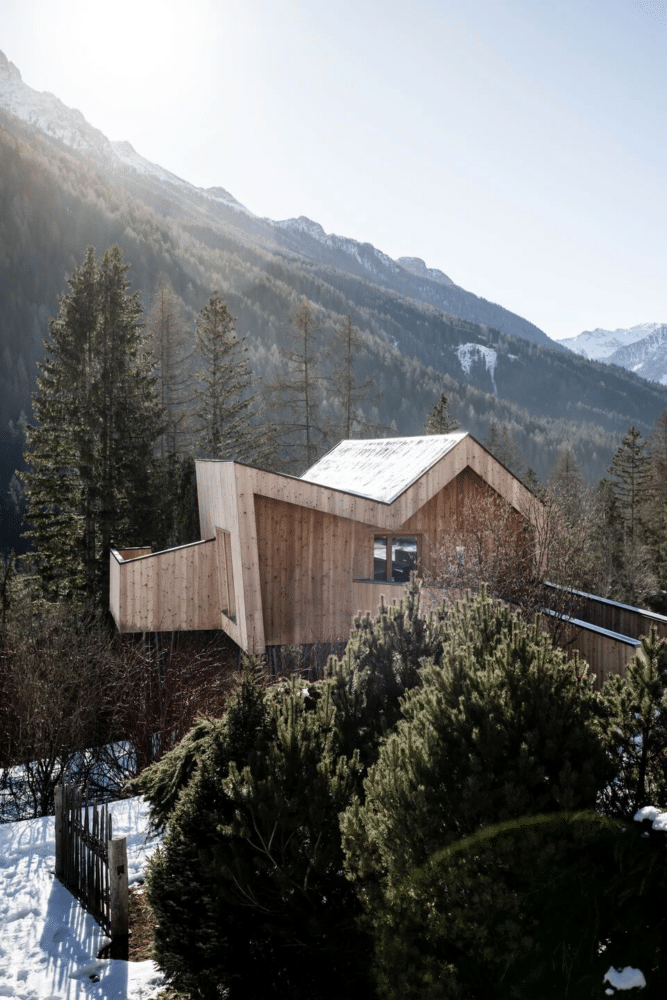
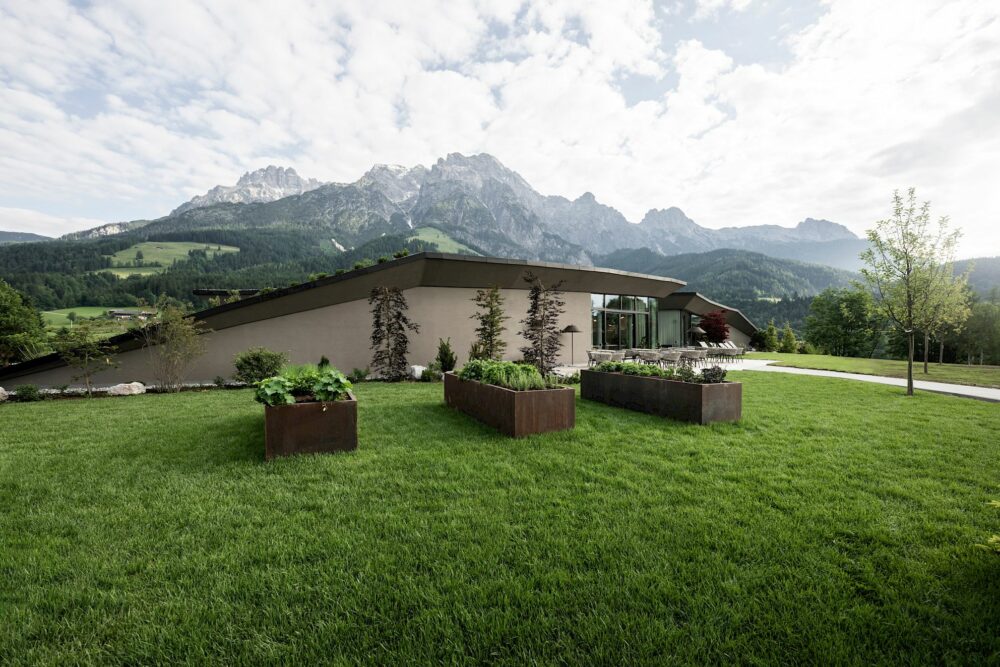
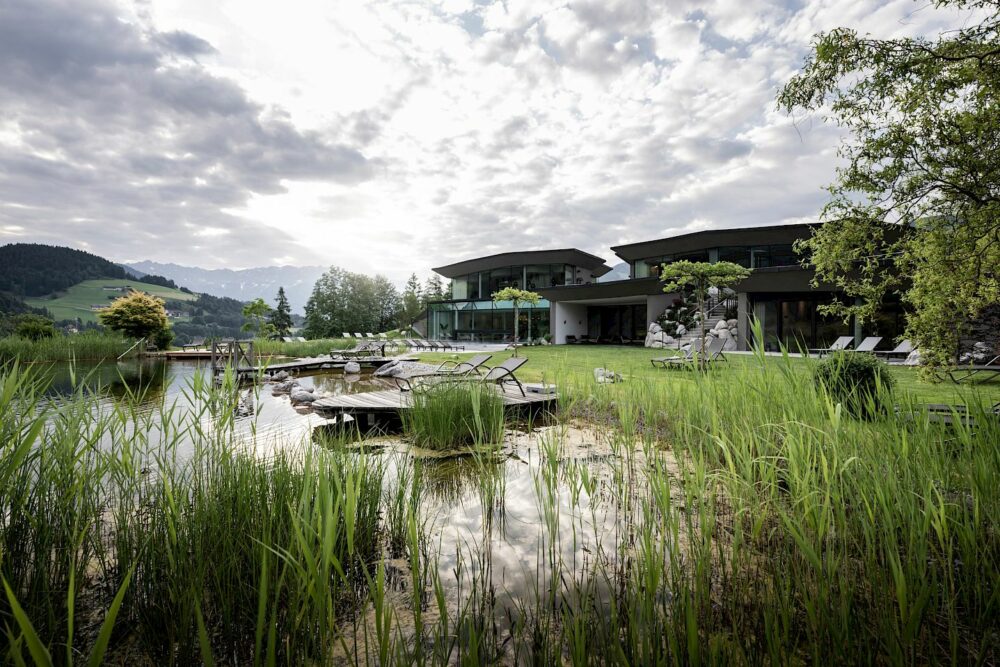
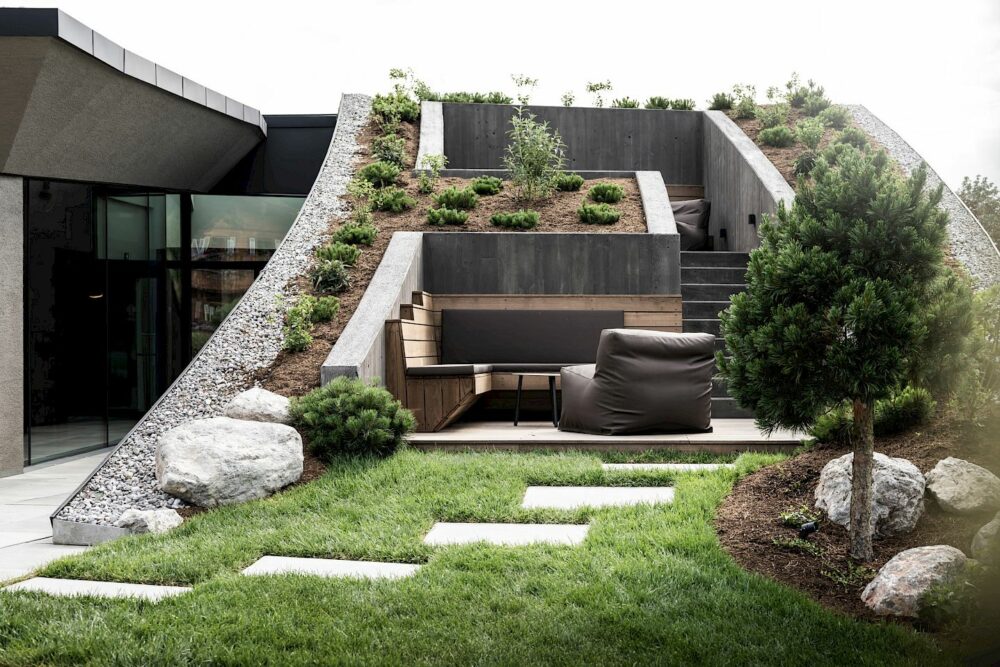

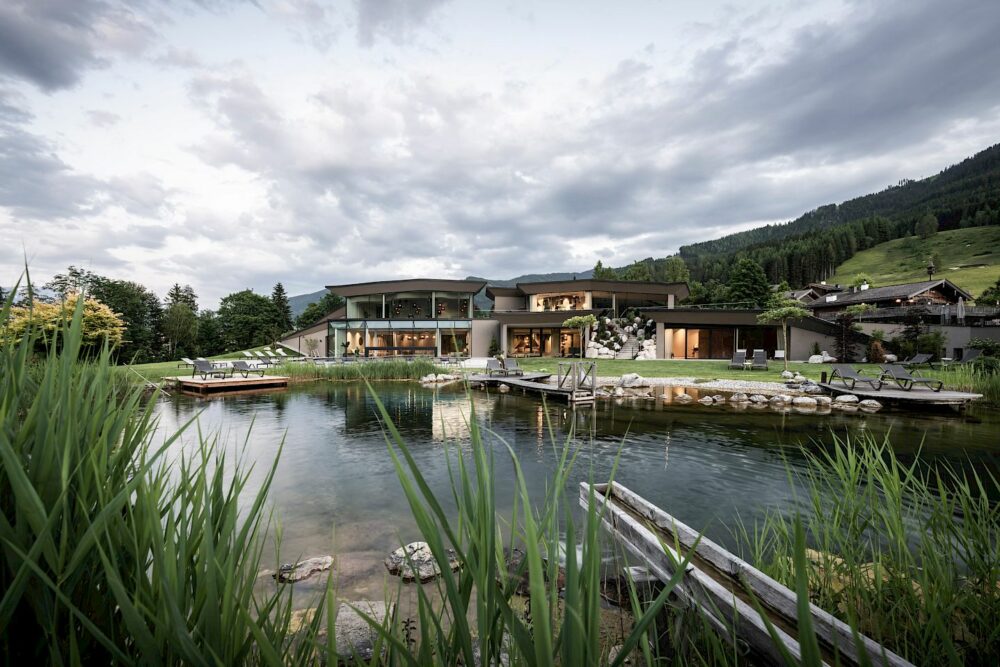
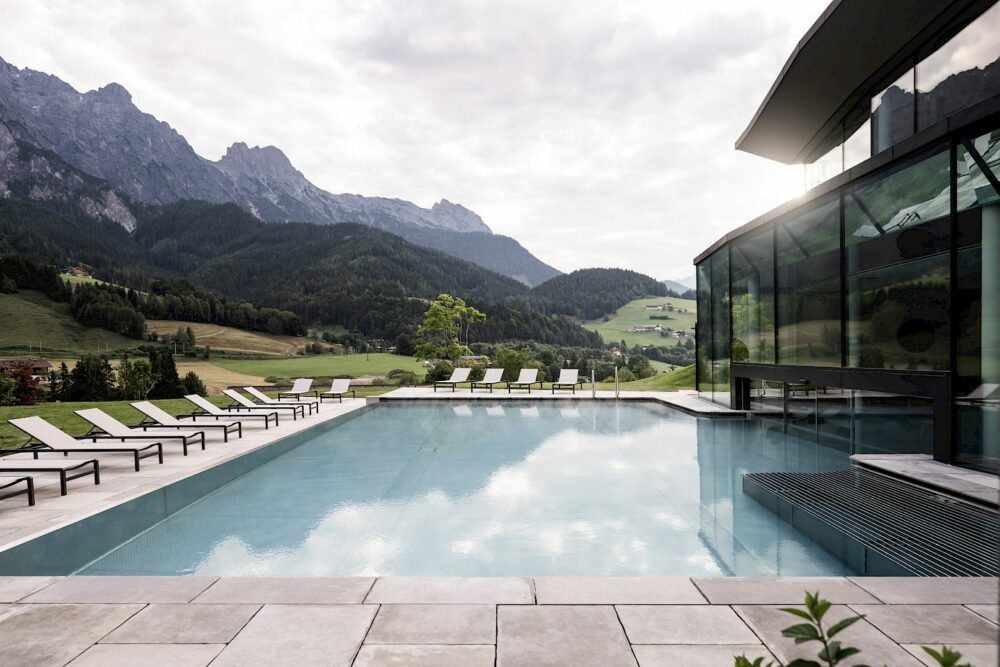
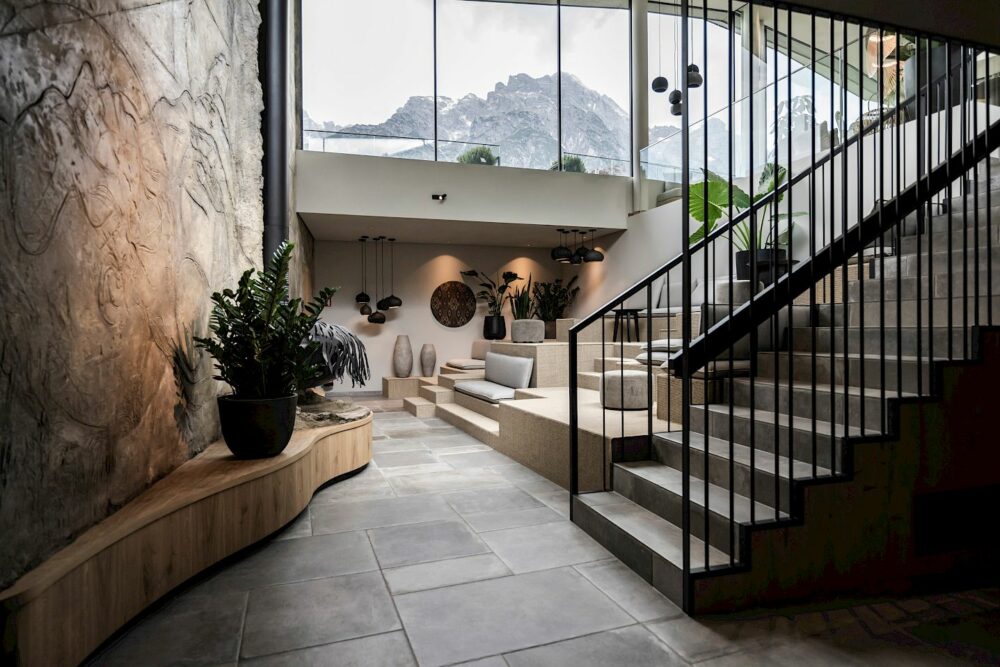
Recycled Materials, a Trending Concept, in Biwak 12 by Plasma Studio
In 2022, Plasma Studio completed the conversion of a typical 1980s mountain restaurant located in Moso, in the heart of the Sesto Dolomites, into Biwak 12. The design concept is drawn from the elements of a small, red, mountain hut located at the foot of the most famous local panorama. With recycled materials, reorganized spaces, and the chromatic aspect of the building transformed, the new Biwak 12 now also has a new external area available for the general public. Both the exterior and interior allude to the mountains and the hut’s microcosm. The hut’s red color is used in the counter’s brickwork, as well as in chairs, benches, tables, lamps, some of the walls, and part of the vaulted roof. The Italian expertise in modern industrial design is evident in the seamless integration of industrial-like materials (such as sheet metal) with plywood panels that are completely natural except for the color treatment.
